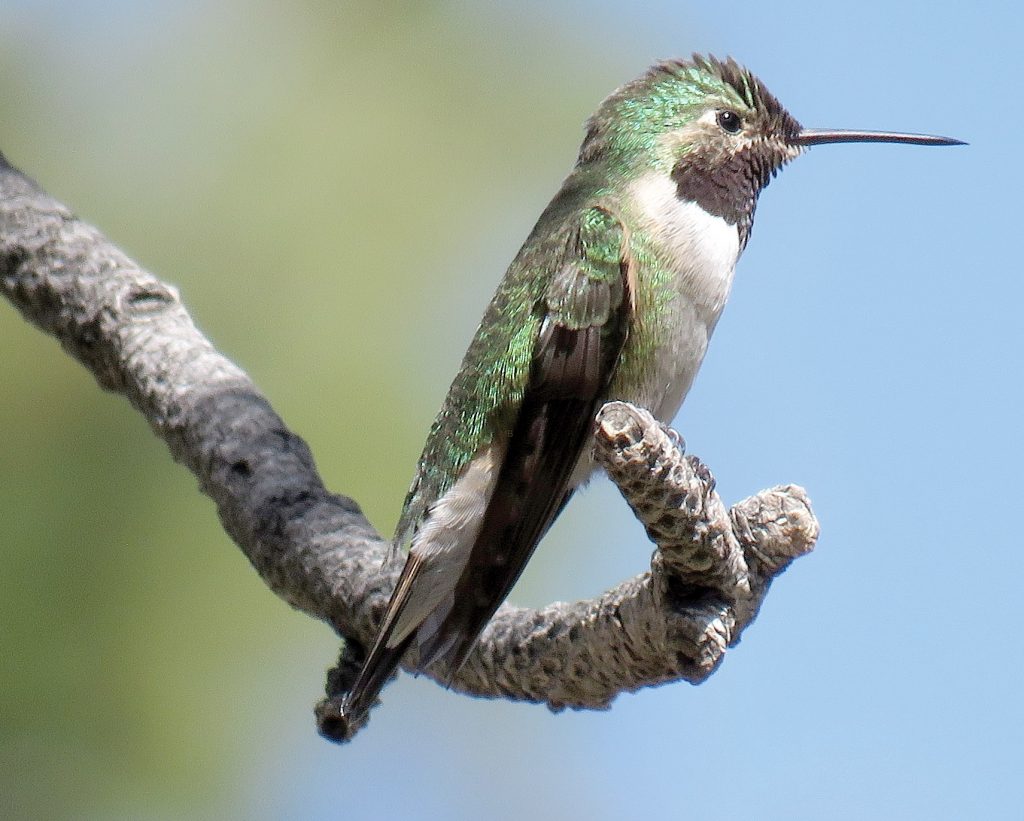Why Hummingbirds Use Perches
Hummingbirds need to ease off after flitting through dense foliage and shrubs. Plus, the wearisome chores of nesting also make these birds all in and so, they need to take a break. However, a perch is also used for a wide variety of other useful purposes. Some of these are outlined below:
- A perch offers hummingbirds a nice place to expose their plumage to direct sunlight by drooping or stretching their wings.
- Hummingbirds can also use perches to groom their feathers that help keep their plumage in top condition.
- Even though these tiny fliers prefer lapping up sweet nectar, they also require protein in their diet especially during nesting season. They get this protein from eating flying insects. Without perches, it would become quite challenging for them to hunt down bugs.
- Hummingbirds are territorial and inquisitive little birds. Perches allow them to patrol their territory and keep an eye on any avian intruders.
- A high perch offers many advantages for hummingbirds which is why they prefer resting on such perches. These high perches allow them to have nice and wide views of their surroundings. They can do sunning in full sunlight and look out for intruders from high above. The low perches are typically not preferred because leaves and branches block up their views.
Learn More: A Beginner’s Guide to Hummingbird Nests

Fort Carson Mountaineer
Significance of Natural Perches
The most common natural perches for these birds are thin tree branches with tiny twigs and vines. Hummingbirds typically cannot have a firm grip on a branch of a tree because their feet are not suitable for that. But some species do occasionally rest on tree branches especially when they are all in. Keep in mind, it is pretty challenging for these tiny sprites to orient themselves on trees. If they do perch on a tree, however, they fold back their feet as their belly faces the branch. Since they use their needle-like bills to find nectar-feeding blooms, it also makes perching quite dangerous for these birds. The long beaks can easily be impaled on tree branches that are way too close. In addition to weak grip, hummingbirds also cannot move their legs while perching. Sometimes, you may notice them hopping on either one of the two feet on a branch.
Hummingbirds are known to zoom off as they fly around shrubs and foliage. Depending upon the species, they may perch for just about 10 to 30 seconds on average.
Typically, when hummingbirds consume bees and ants, they are more likely to spend more time on a perch that if they just sip nectar.
Learn More: How To Attract Hummingbirds To Your Yard
Significance of Artificial Perches
- While perching, a hummingbird will normally sway in the breeze and may rest either at the very tip of the tree branch or on its side. If you are creating a hummingbird garden, you should try to give them natural perches. These birds usually prefer little twigs and branches that are as far away from the center as possible.
- You can analyze their favored spots by simply looking at the visiting hummers and preserve those that are used more often.
- For birders who lack natural perches in their yard, they may consider adding supplemental perches instead. Attracting a hummingbird is pretty easy with thin clothesline or by tossing little twigs and sticks to a brush pile. Alternatively, it’s easy to create an artificial perch if you wrap a thick cable around a branch so that it becomes thin enough for these birds to grip easily. Plus, you can create a hummingbird swing on your own and add it in your garden or yard. If you want to draw more attention, add some red beads or wire to these artificially-made perches.
- Once you have assembled these artificial perches, place them right next to feeders. In this way, they can determine what type of perches suit them most as per their own preferences. However, while setting up a perch, always remember to leave sufficient space where birds can flutter freely around and feel secure too. Plus, this will help them guard their territory and also assist them to take sudden flight into the air.
Learn More: Do Hummingbirds Bathe
Useful Tips for Placing Hummingbird Perches
- Give your hummers a choice and preference by setting up perches of varying heights and angles. You should place some perches out in the open in direct sunlight while others in shaded areas. Depending upon species and the time of day, they may use perches based on their needs.
- Hummingbirds have pretty good habits. They are going to remember where you placed your perches when they visited your yard before. In order to enjoy backyard birding, you must try to place them in areas that are not obstructed by patios or windows.
- If there are any garden misters nearby, it would be great to place perches close to them. Even though hummingbirds simply need a basic birdbath, but they will have to wash their plumage in order to help keep them in good condition. After taking a bathe, they would probably like to have a perch nearby allowing their feathers to dry off.





